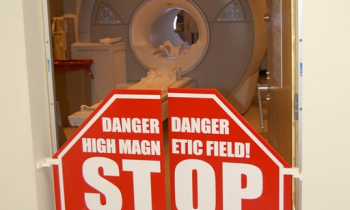Infection outbreaks to be published weekly
A change in political control naturally creates change in the way things are run, and the jaw-jutting ‘Get tough’ nature of the UK’s new coalition Government is palpable. For hospitals, one early change relates to data reporting on MRSA bloodstream infections and C. Difficile. Up to now, these were published monthly by the National Health Service (NHS) Trust; soon they will be published weekly – and by the Department of Health (DoH).
Report: Brenda Marsh
The information will appear on data.gov.uk (launched by the previous government to make public access to data easier). Beginning in early July, and starting with the weekly infection figures between April and June, the plan will involve all NHS hospitals in England. Then, there will be just one week between data collection and its publication.
Andrew Lansley, the new Health Secretary, explained that this is an important step towards the Government’s broader plans to provide more relevant information to patients, so that they can compare hospitals and healthcare organisations. ‘We want to make the large amounts of data that are already collected and used internally in the NHS work for patients, not just managers,’ he explained, adding: ‘As well as data being published at a hospital trust level, which may include the figures for as many as three different hospital sites, we will disaggregate the data to individual hospitals. In time we will also add other healthcare associated infections, like E. coli and MSSA to the list.’ The DoH also intends to examine whether data could be published at department or ward level, whilst still ensuring patient confidentiality.
Economics
Faced with the country’s debts, in its austerity drive the new Government has suggested severe public sector cut backs – involving job losses. Yet, this new weekly demand for infection reports could present a need for additional administrators as well as perhaps software.
Where has the commensurate time come from to analyse the multitude of reports demanded and engendered in the past few decades? The result, in any field or business, is the swelling of administration staff – perhaps, in the case of a hospital, slicing out a piece of the budget that could have been used for patient care. However, the DoH also intends to check for any existing and unnecessary data collections by hospitals. Ending these just might balance the rise in expenditure – and time -- for the weekly publishing of infection data.
Exposure of a hospital’s infection levels should be publicised, but surely 12 reports on a hospital in a year are sufficient to indicate any outbreaks and how it has coped with them? Word of an infection travels fast, via posted warnings, patients, visitors and others – a cheaper way for locals to decide on which hospital to attend. We can only hope the costs for this new, and possibly unnecessary, demand for weekly statistics can, in fact, be covered by eliminating earlier unnecessary demands for statistics.
UK statistics
- From 1993, C. difficile and MRSA cases consistently rose, to a peak in 2006.
- According to recent figures published by the Office for National Statistics, between 2007 and 2008 the number of death certificates showing C.difficile as a contributing factor fell by 29%, to 5,931. Additionally, the number of death certificates mentioning MRSA as a contributing factor fell by 23%, to 1,230.
- The emphasis on better hygiene measures and the setting up of hygiene surveillance teams in hospitals (reported by EH in the past) has made a difference, and the downward trend appears to be continuing.
07.07.2010








